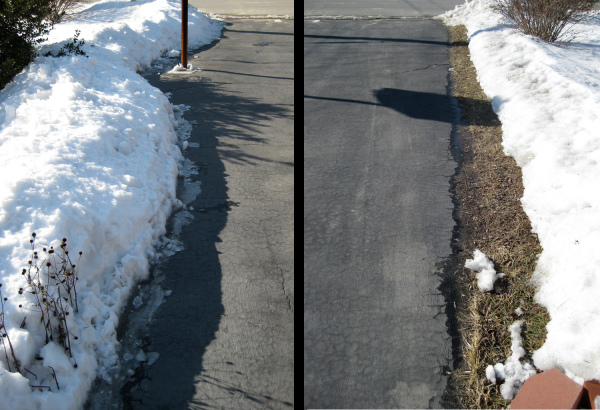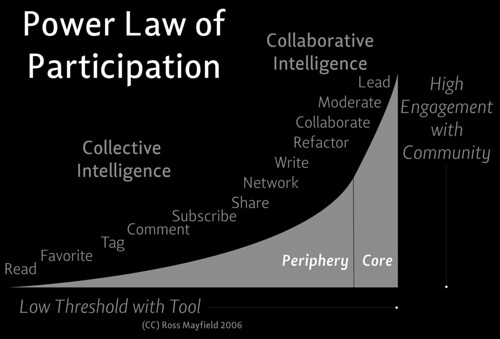 "We can use Wikipedia? Our [insert subject here] teacher told us Wikipedia isn't accurate, so we couldn't use it."
"We can use Wikipedia? Our [insert subject here] teacher told us Wikipedia isn't accurate, so we couldn't use it."
I get this at the beginning of every semester from my incoming freshmen as we start doing internet research. Wikipedia articles regularly come up as one of the first couple results when students do internet searches, so it's an issue that comes up right away.
I didn't used to spend much time going over how to effectively find and use information from online sources. The last several years I've made it much more of a priority as it's a skill that I find extremely useful for myself. As more and more information is available online, it's pretty important that students know how to navigate and evaluate this wealth of digital knowledge. Below are a few of the basic suggestions I give students. We go into a little more detail than what's found below, but I'm just looking for a little feedback on the suggestions I offer here and anything you feel would be valuable to add.
Wikipedia
No getting around the Wikipedia "issue" today. Kids are hearing lots of different things from lots of "expert" sources (teachers, parents, etc.). Here's what I go over with students:
- Anyone can edit Wikipedia. This is true.
- Wikipedia has a large community of people who will quickly fix most errors.
- In my time using Wikipedia most information I find seems quite accurate. Most errors I see are spelling/grammatical errors as opposed to factual errors.
- Wikipedia has undergone several reviews comparing it to more traditional encyclopedic sources (primarily Encyclopaedia Brittanica). It generally fares quite well in these comparisons (see this page for some examples).
- Fun tip: Science articles on Wikipedia tend to be pretty technical. This doesn't make them great for 9th graders who don't have a wealth of technical science background. I suggest they check out the Simple English Wikipedia. It has fewer articles with often less detailed info, but they are all written in Simple English, which is much better for most 14 year old students.
- My advice to students: Feel free to use Wikipedia. Just realize what it is and how it works. If you see something that looks slightly fishy, check the results with other sites. If you see errors that you can fix: do it1.
Yahoo! Answers and Wiki.Answers
Students have been using these sites more and more the last couple of years. This year is the first time I've specifically addressed these sites. Both sites are very similar in how they work: Anyone can ask a question and anyone can answer. Answers can be voted up or down by the users depending on how accurate or helpful the answers seem. All questions and answers are searchable. What I go over:
- Anyone can ask and answer questions (similar to Wikipedia)
- Unlike Wikipedia, the community isn't quite as robust at voting down bad answers and voting up good answers. There's also a fair number of users who purposely give goofy/funny/inappropriate answers. There aren't consequences for doing these things as there is in Wikipedia.
- In my own experience many answers are good, but there are a few too may that are bogus for me to use it.
- My advice to students: These sites are good "jumping off points." Some information is easiest to find on these sites. However, because there isn't a robust community patrolling these sites, don't use them as your final source of information. Instead, use the given answers to help you find more reliable sites that give the information.
Students generally feel they're great searchers using Google or other search engines. However, in my experience, they don't know many of the simple tricks and operators to take their searching to a higher level. What I go over:
- Keywords: Student very often will type in a full question into the search box. This works enough that they're convinced it'll work for everything. I go over why it isn't the best way to search2.
- Operators:
- Quotes: to search for exact phrases
- Minus before words: to eliminate words from search results
- Domain types: Use the "site:gov," "site:edu," etc. searches to narrow searches to specific domains.
- Google-y tricks:
- Recent results: Especially helpful when looking for information on recent discoveries or current event items.
- Related searches & Wonder wheel: Both do about the same thing (find similar search terms which might give you better results), though the Wonder wheel sure is fun.
- Google squared: Especially nice for finding lists of items and comparing items.
While this isn't a complete listing of online research skillz and tips that I go over with my classes, these are the tips and issues that students seem to run into the most.
Do you have any suggestions that should be included? Any critique of what I've put down here? Let me hear it in the comments!
__________
cc licensed flickr photo by burnt out Impurities
__________


















 well (
well ( pace of the other teachers. I did this even though we really weren't collaborating with each other, and looking back, I realize that I was really replicating was teaching style². No wonder I was frustrated. What I was doing was trying to do was suppress the style I had developed over several years of practice, research, and experimentation. It was foolish of me, and I now regret it.
pace of the other teachers. I did this even though we really weren't collaborating with each other, and looking back, I realize that I was really replicating was teaching style². No wonder I was frustrated. What I was doing was trying to do was suppress the style I had developed over several years of practice, research, and experimentation. It was foolish of me, and I now regret it.